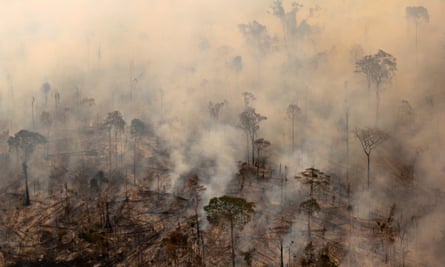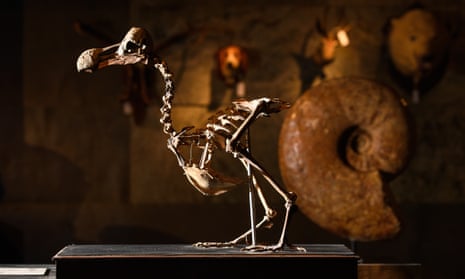Just over 250 million years ago, the planet suffered what may be described as its greatest holocaust: ninety-six percent of marine genera (plural of genus) and seventy percent of land vertebrate vanished for good. Even insects suffered a mass extinction – the only time before or since. Entire classes of animals – like trilobites – went out like a match in the wind.
But what’s arguably most fascinating about this event – known as the Permian-Triassic extinction or more poetically, the Great Dying – is the fact that anything survived at all. Life, it seems, is so ridiculously adaptable that not only did thousands of species make it through whatever killed off nearly everything (no one knows for certain though theories abound) but, somehow, after millions of years life even recovered and went on to write new tales.
Even as the Permian-Triassic extinction event shows the fragility of life, it also proves its resilience in the long-term. The lessons of such mass extinctions – five to date and arguably a sixth happening as I write – inform science today. Given that extinction levels are currently 1,000 (some even say 10,000) times the background rate, researchers have long worried about our current destruction of biodiversity – and what that may mean for our future Earth and ourselves.
In 2009, a group of researchers identified nine global boundaries for the planet that if passed could theoretically push the Earth into an uninhabitable state for our species. These global boundaries include climate change, freshwater use, ocean acidification and, yes, biodiversity loss (among others). The group has since updated the terminology surrounding biodiversity, now calling it “biosphere integrity,” but that hasn’t spared it from critique.
A paper last year in Trends in Ecology & Evolution scathingly attacked the idea of any global biodiversity boundary.

“It makes no sense that there exists a tipping point of biodiversity loss beyond which the Earth will collapse,” said co-author and ecologist, José Montoya, with Paul Sabatier Univeristy in France. “There is no rationale for this.”
Montoya wrote the paper along with Ian Donohue, an ecologist at Trinity College in Ireland and Stuart Pimm, one of the world’s leading experts on extinctions, with Duke University in the US.
Montoya, Donohue and Pimm argue that there isn’t evidence of a point at which loss of species leads to ecosystem collapse, globally or even locally. If the planet didn’t collapse after the Permian-Triassic extinction event, it won’t collapse now – though our descendants may well curse us for the damage we’ve done.
Instead, according to the researchers, every loss of species counts. But the damage is gradual and incremental, not a sudden plunge. Ecosystems, according to them, slowly degrade but never fail outright.
“Of more than 600 experiments of biodiversity effects on various functions, none showed a collapse,” Montoya said. “In general, the loss of species has a detrimental effect on ecosystem functions...We progressively lose pollination services, water quality, plant biomass, and many other important functions as we lose species. But we never observe a critical level of biodiversity over which functions collapse.”
This doesn’t mean we shouldn’t be deeply concerned about biodiversity, according to the researchers. Instead, we should worry about every species lost and not focus on a theoretical line in the sand.
“It is in fact the planetary boundary argument that implies that there is a lot of biodiversity that has no value. There is no problem with losing a small number of species, the argument goes,” Montoya said. “We argue that even small losses of biodiversity have important consequences for ecosystem function and service provisioning.”
In other words, extinction of species may not result in a total collapse of our ecosystems – but the more we lose, the less productive, efficient, and healthy our environment will be. And the more at risk we put ourselves.
Boundary scientists fire back
But, the Stockholm Resilience Centre recently published a long response to Montoya’s paper in the usual way of scientific sparring – publications going back and forth like boxers exchanging blows.
Johan Rockström the executive director of the Stockholm Resilience Centre and one of the leading researchers on planetary boundaries, said that Montoya’s critique didn’t stand up to scrutiny because its authors misunderstood the definitions built around the “biosphere integrity planetary boundary.”
Rockström agrees that there is no evidence of a planetary tipping point when it comes to biodiversity. According to Rockström, biodiversity decline does not have a hard planetary boundary like, say, climate change. Instead he describes biodiversity as a variable that operates “under the hood of the planetary system” because it influences the stability of our climate, ozone layer and oceans – all of which Rockström contends have very clear planetary boundaries.
“We have never suggested a planetary scale biodiversity tipping point...” Rockström said. “Instead, the rational for biodiversity as a planetary boundary is that the composition of trees, plants, microbes in soils, phytoplankton in oceans, top predators in ecosystems…together constitute a fundamental core contributor to regulating the state of the planet.”
According to Rockström, biodiversity is one of the pillars supporting our planet – and if too much biodiversity is lost we risk “triggering a tipping point” in our climate or oceans, which in turn could risk pushing the planet into a new state.
“Without biodiversity, no ecosystems. No ecosystems, no biomes. No biomes, no living regulator of all the cycles of carbon, nitrogen, oxygen, carbon dioxide and water,” he added.
Rockström says biodiversity loss could risk the “safe operating space” for humans, leaving us in an alien world increasingly hostile to our own survival. For example, life would still survive under apocalyptic climate change – but we may not.
While ecosystems may not fully collapse, scientists have found that some ecosystems can undergo what they are called “regime shifts.” Coral reefs, overheated by climate change, will shift to a much less productive, much less biodiverse algae-based ecosystem. Climate change, or alternatively humans with chainsaws and fire, can shift forest ecosystems to grasslands. While none of these ecosystems may wholly collapse, they will look nothing like they did after the shift occurs.
Montoya admits that such regime shifts “do actually happen” and is “well established” for some ecosystems – like forests, coral reefs and Arctic sea ice – though “unclear” if it happens in all ecosystems or only a few.
And he adds, perhaps most importantly, that “the mechanisms [of regime shifts] have nothing to do with biodiversity loss.” Instead, they have been driven by climate change or human actions – such as clear-cutting.
Debating definitions
It may be that unclear or shifting definitions are at the root of the dispute.
“Fatally, the boundaries framework lacks clear definitions, or it has too many conflicting definitions, does not specify units, and fails to define terms operationally, thus prohibiting application by those who set policy,” Montoya, Donohut and Pimm write in the paper.
But Rockström contends that when understood correctly the planetary boundary framework holds up to scientific scrutiny. He says planetary boundaries do not mean that humanity can just destroy and upend all the way up to a red line without consequences.
“This is of course just nonsense,” he noted, arguing that the planetary boundary for biosphere integrity is magnitudes more ambitious than the Aichi Targets from the Convention on Biological Diversity, an international agreement set on preserving biodiversity – though already several goals have not been met.
“If the world is able to reduce biodiversity loss below the planetary boundary this would not only require major conservation efforts across the world,” he said, adding that “once inside the safe operating space, we would of course have to continue on a sustainable pathway.”

Burning forest is seen during “Operation Green Wave” conducted by agents of the Brazilian Institute for the Environment and Renewable Natural Resources, or Ibama, to combat illegal logging in Apui, in the southern region of the state of Amazonas, Brazil, August 4, 2017. Photograph: Bruno Kelly/Reuters
Rockström said that he believes the disputing researchers have much more in common than their infighting would imply.
“We are [all] working to safeguard biodiversity for sustainable development. We are [all] in the same camp. Complementing each other, they at the ecosystem level, us at the planetary level.”
But Montoya and his group stand by their criticism and are working on a second paper responding to Rockström and his team.
While Montoya’s paper does not critique the other eight planetary boundaries in their paper, Montoya told me that each of the boundaries – even the physical ones – have faced “a lot of controversy.”
“They all suffer from the tipping-point problem,” he said, “which we argue promotes a business-as-usual ethos and distracts us from taking the action that is urgently needed.”
In many ways one could argue that the planetary boundary is an easy and simple way to explain environmental impacts to world leaders – few of whom have any education on ecology or the environment – and the public.
But Montoya argues that the planetary boundaries concept is doing more harm than good.
“Poor or ill-founded science ultimately brings about ineffectual policies at best – and potentially highly damaging ones – and erodes trust in scientists,” he said.
And this can have real world impacts: Montoya and colleagues point to forest policy in Europe as one example.
“The assumption that there is a critical biodiversity level below which forest functioning will collapse prompted managers [to] plant resilient tree species to climate change, pests, and disease,” Montoya explained, adding, “this was recommended to avoid reaching a tipping point in forest service provisioning, primarily timber production.” But the recommendations have resulted in endangered old growth forests and native species, according to Montoya.

While the on-going debate over planetary boundaries is deeply academic and wonky, it is not without importance to the public. How we communicate environmental crises – and the accuracy of the science that underpins that communication – proves more important with every passing year, as the world walks into climate and ecological uncertainty.
Yes, life itself survived the Permian-Triassic mass extinction event – but most species did not. Believe me, humans probably wouldn’t have survived the tens-of-millions of years that followed the Great Dying: oxygen levels were dangerously low, food would have been scarce, and the world would have looked largely barren and wasted even as some species and ecosystems managed to survive. Outside the moral dilemma of extinction, there is no question that if humans push more-and-more species into oblivion there will be impacts on our society – and they could become catastrophic.
Humans evolved 248 million years later in an Earth that was far more biodiverse and rich, a kind of Eden of abundance and diversity. But our current actions risk all that – and perhaps ourselves.









Comments (…)
Sign in or create your Guardian account to join the discussion